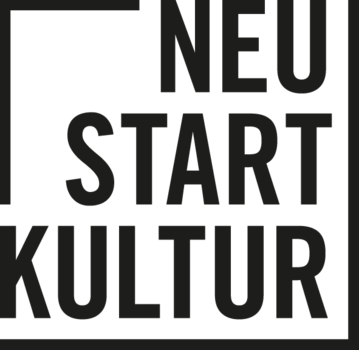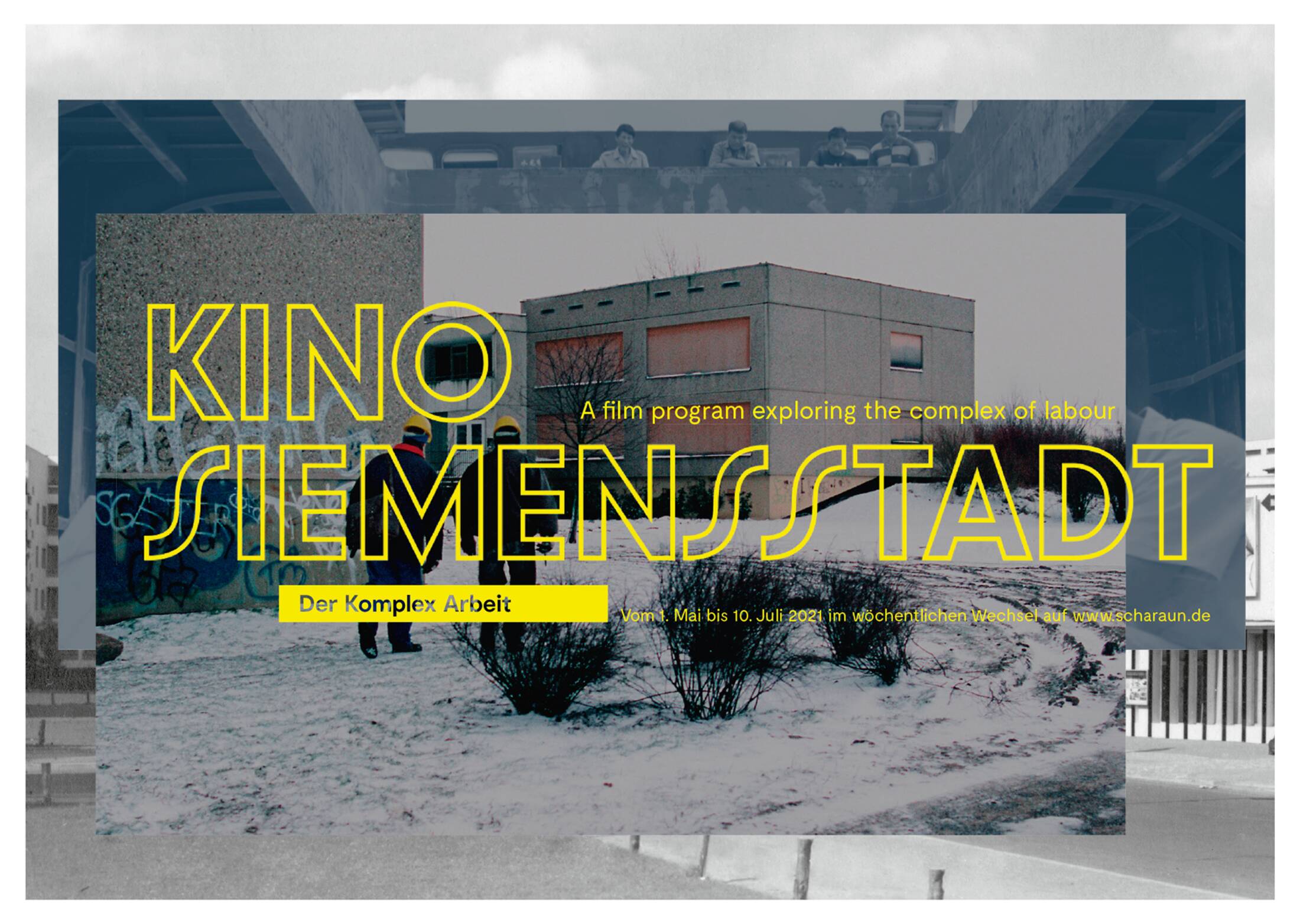Curated by Olaf Stüber and Jaro Straub
The ten-weeks online series KINO SIEMENSSTADT - The Complex of Labour and the accompanying exhibition Anette Rose Techno Textiles at SCHARAUN Projectspace for Art and Architecture gives artists the opportunity to reflect on the subject of ‘work’ through selected films and videos:
Darren Almond, Celine Berger, Hartmut Bitomsky, Filipa César, Chen Chieh-Jen, Chto Delat, Jeremy Deller, Justine Emard, Antje Engelmann, Harun Farocki, Alex Gerbaulet, Assaf Gruber, Hulda Rós Gudnadottir, Laura Horelli, Mikhail Karikis, Eléonore de Montesquiou, Hira Nabi, Henrike Naumann, Wendelien van Oldenborgh, Adrian Paci, Cora Piantoni, Anette Rose, Sandra Schäfer, Romana Schmalisch & Robert Schlicht, Melanie Smith, Caspar Stracke, Jean-Marie Straub & Danièle Huillet, Pilvi Takala, Clemens von Wedemeyer, Ina Wudtke
To the Archive KINO SIEMENSSTADT The Complex of Labour
Program #10 from 3 July - 10 July:
Henrike Naumann, Ina Wudtke, Antje Engelmann
Program #9 from 26 June - 3 July:
Hulda Rós Gudnadottir, Mikhail Karikis, Darren Almond
Program #4 from 22 May - 29 May:
Pilvi Takala, Celine Berger,
Romana Schmalisch & Robert Schlicht
Program #3 from 15 May - 22 May:
Chto Delat,
Assaf Gruber, Eléonore de Montesquiou
Program #2 from 8 May - 15 May:
Laura Horelli, Adrian Paci, Hira Nabi
Program #1 from 1 May - 8 May:
Jeremy Deller, Mikhail Karikis, Chen Chieh-jen, Caspar Stracke
This year KINO SIEMENSSTADT The Complex of Labour, the follow-up program in the series, relates directly to the local context of Siemensstadt as a working-class neighbourhood. It engages with the changing concept and understanding of labour in the fields of artists’ films and videos against the backdrop of the upcoming project Siemensstadt 2.0, which was jointly initiated by the Siemens company and the Berlin Senate, and comprises an urban and social restructuring process for Siemensstadt on a massive scale (projected to run until 2030).
Film and labour entered into a symbiotic relationship very early on. The presumably first film on the subject — “Workers Leaving the Lumière Factory” — was made by the Lumière brothers in 1895. In a single shot this early contemporary document shows the numerous employees of the photographic factory exiting the premises for their lunch break.
The image of work and our understanding of it, especially of wage labour and the self-image of workers, has changed a great deal since then. In the late 19th century, the first workers’ associations and the proletarian women’s movement formed in Europe, aimed at the protection, progress and complete emancipation of the working class.
Industrialization had already fundamentally changed the concept of work. Workers and labour force became commodities. People received a wage paid by another person, which represented a new kind of dependence. A central theme of the film program exploring the complex of labour is the question of how filmmakers investigate this dependence and the social tensions that arise from the capitalization of labour. According to which dramaturgical aspects can images of labour be captured beyond propaganda and made visible as such?
Harun Farocki states in his film "As You See" (1986) that "capital takes labour into service and hides it behind walls" following Hannah Arendt's idea that labour is hidden because labour society is ashamed of it.
Work as such has changed fundamentally once again in recent decades. Most people are no longer employed in the industrial and manufacturing sectors. The type of worker leaving the Lumière factory can rarely be found in Western society anymore. The modern wageworker is more likely employed in the service sector or even the I.T. sector. What has been fought for and negotiated since the first decades of the 20th century in terms of labour rights and working conditions (minimum wage, working hours, insurance, etc.) has been threatened for some time by globalization and the import of cheap labour as well as the export of production to developing countries.
With friendly support by


Scharaun
Jungfernheideweg 4
13629 Berlin
info@scharaun.de
Insta: @scharaun
www.scharaun.de
